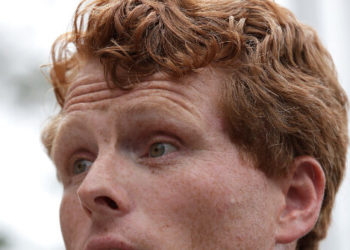
retouch@ProseonPixels; TBWA; Laila Cohen
Don’t sound the death knell for ad agencies yet.
Artificial intelligence threatens to upend the ad agency sector. Ever-improving tools are shortening the time it takes to produce logos, online ads, and even movies.
In the soon-to-be-published book “AI First” by Adam Brotman and Andy Sack, OpenAI CEO Sam Altman is quoted as saying, “95% of what marketers use agencies, strategists, and creative professionals for today will easily, nearly instantly, and at almost no cost be handled by AI.”
The agency world thinks differently. BI spoke to three top creative directors, who said AI is fueling a creative boom and that the technology doesn’t portend an ad agency extinction event. Instead, they’re using AI to more efficiently pitch big ideas and to expand their services into areas like content optimization. It’s Don Draper from “Mad Men,” on steroids.
“AI can be an incredible creative tool, and if we keep getting in our own way of fearing it, it’ll only date us,” said Elena Knox, executive creative director at BBDO New York, which works for clients like M&M’s, Wells Fargo, AT&T, and St-Germain.
Knox said she’s using AI to sell ambitious concepts to clients. She and her team used tools like Midjourney to bring to life a vision of an office where tree growth exploded into it before landing the viewer in a forest in the form of a GIF. It convinced the client to invest a multimillion-dollar production budget for shoots in New Zealand and Bulgaria.
“Before you would have had to spend hours comping that, and the image wouldn’t have existed,” Knox said. “In AI, we were able to make a quick GIF of it and show the clients: this is what we want to film.”
In a separate pitch, Knox and her team used AI to create a realistic voiceover that convinced the client they needed to invest in that particular celebrity. In yesteryear, the agency might have needed to create a multi-page pitch deck to showcase why the celebrity was relevant, include their latest movies and social media followings, and perhaps call in the celebrity or a voice impersonator for testing.
“What AI allowed me to do was show the client what it felt like,” said Knox. “There’s nothing like hearing the thing and being like, well, I can’t unhear that.”
Trading celebrity glamour for an AI ‘GOAT’
AI can come to the rescue when lavish celebrity shoots are off the cards, too.
Reckitt-Benckiser’s laundry detergent brand Woolite was famed in the 1970s through the 1990s for using megastars of French cinema in its advertising. But when Woolite asked its creative agency, BETC, to relaunch the brand in France this year, the budget was more constrained than in decades past.
Still wanting to maintain the brand’s celebrity cachet, BETC used AI to create a new brand character: the Fluffy GOAT. A play on the “greatest of all time” moniker, the superstar goat is seen globetrotting on a speedboat, private jet, and in a limousine. Alasdhair Macgregor Hastie, executive creative director at BETC, said the campaign was delivered in six weeks, compared to the three to six months that in-person productions featuring big celebrities would ordinarily take.
“AI to me is something that can only enhance what we do. I’m old enough to remember when Photoshop came in and people were wailing and moaning it was the end of advertising,” Macgregor Hastie said. “Photoshop became a tool, and if we don’t adapt to the new tool then the new tool is going to take over.”
For all its attributes, AI still presents clear challenges to the ad agency business model, in which companies tend to bill clients based on the number of full-time equivalent employees that are devoted to their accounts. Martin Sorrell, the executive chairman of the advertising company S4 Capital, told analysts on a recent earnings call that agencies like his were adapting their commercial models in some cases to be “on the basis of assets or outputs delivered.” It reflects how AI is reducing the time it takes to manage and produce campaigns.
The creative directors BI spoke to also said there were open questions about how the industry would continue to nurture early career talent, now that many junior tasks can be automated.
Eric Wegerbauer, chief creative officer at TBWA, said the availability of AI tools is changing the scope of work the creative agency is pitching.
It recently won a big piece of work that was all about content optimization across different formats and countries. TBWA also recently devised an idea for a campaign that would deliver close to 1 million personalized variations of an ad to target individual customers.
“You’d just never ever, ever do that without AI,” Wegerbauer said.
The post Sam Altman said AI would replace 95% of ad agency work. 3 top creative directors say AI has won them lucrative business. appeared first on Business Insider.




